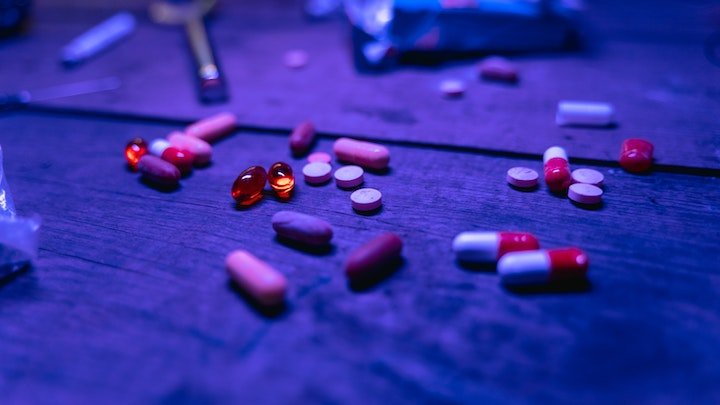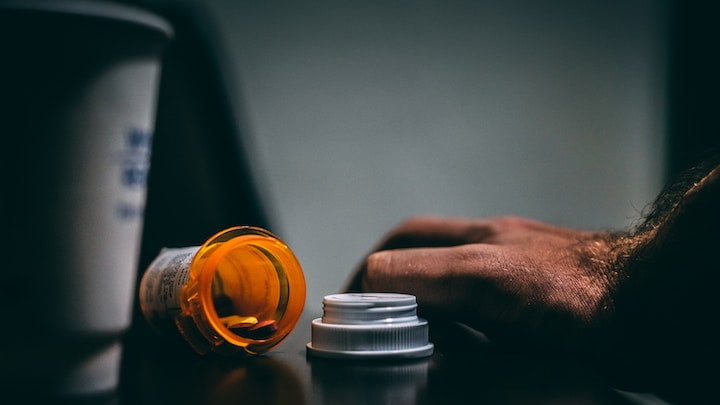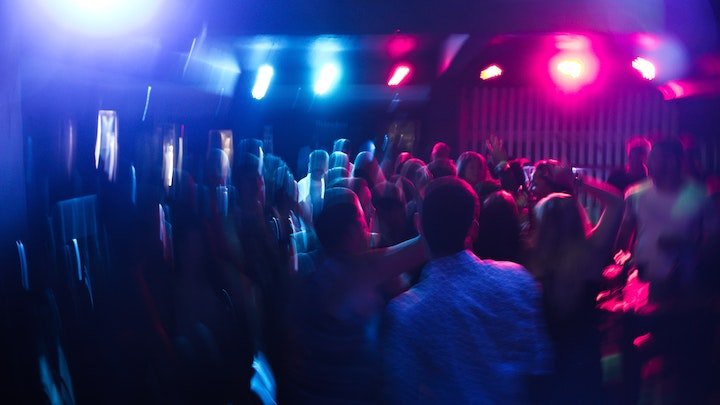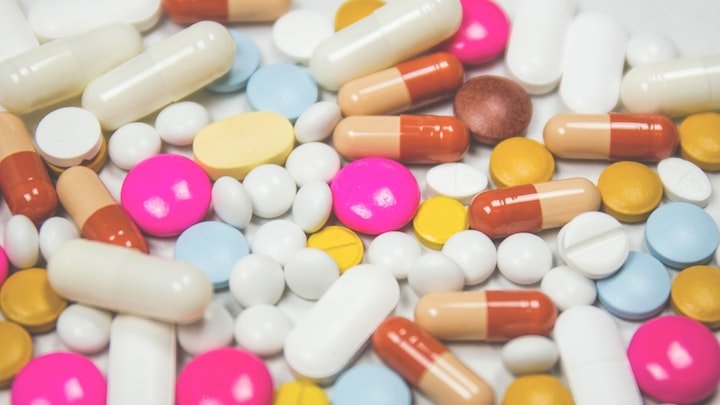LSD is a widely known drug, used predominantly for recreational purposes.
Despite its fame, there are a lot of questions surrounding its usage.
Many people can have concerns as to how long the drug stays in the body, as well as whether there are risks associated with it.
LSD: what is it?

LSD, or Lysergic acid diethylamide, is a substance which comes from a type of fungus known as ergot. It is categorised as a psychedelic, a type of drug that has hallucinogenic effects which vary according to dosage.
Experiencing these hallucinations is referred to as a ‘trip’.
In its basic form, LSD looks like a clump of white, crystal-like material. However, its properties mean that it is often absorbed into sheets of gelatine or paper, or infused into sugar cubes.
The drug is classified as Class A in the UK, and is illegal to own or distribute.
Some of the most common effects of using LSD include:
- A rush of energy
- Increased confusion and disorientation
- Anxiety
- Visual, auditory, and sensory hallucinations
- Paranoia
- Fluctuations in mood
- High blood pressure
- Fast heartrate
- Profuse sweating
- High body temperature
How the body processes LSD

When LSD is ingested, the part of the body responsible for metabolizing it is the liver. As it moves through the digestive system, this organ breaks the drug into two metabolites: 2-oxy-LSD and 2-oxo-3-hydroxy LSD.
From here, LSD’s component metabolites are whizzed around the body via the bloodstream. This is how it circulates to the brain and other organs.
Once the metabolizing process has taken place, the effects of LSD can occur as quickly as 20 minutes. Others, however, might only experience changes in their perception after an hour or two.
How quickly the body is able to break LSD down into the listed metabolites and experience the substance’s effects depends on several factors. An individual’s Body-Mass Index (BMI), metabolism, and dosage can all have an impact.
As well as these factors, the method of consumption can affect the speed at which the effects of LSD are felt. Consumed orally, effects can start after 20 minutes and peak around 2 to 3 hours later. Injected into the veins, this can be as fast as 10 minutes [1].
Do LSD’s effects last a long time?

Because LSD’s effects inhibit individuals to such a severe extent, limiting their ability to communicate and control their motor functioning, it’s really important to understand how long they last for.
Taking LSD can be particularly dangerous if an individual plans to drive a car or operate heavy machinery while under its influence, and so nothing as such should be attempted until the following period of time has passed.
For most people, the range of time for LSD effects to wear of is between 6 and 15 hours. However, important factors to take into consideration which might lengthen this time include the strength of the drug and the dosage consumed.
Even after 15 hours, individuals can experience something known as an ‘afterglow’. For a further 6 hours, certain sensations can continue to be felt, including anxiety and a general haziness.
24 hours is the duration after which the body is usually completely sober from LSD.
How long can LSD be detected in the body after use?

A combination of its effects and its status as an illegal drug means that individuals often want to know how long LSD lasts within the body. The answer, however, is not a simple one as the drug can last in different parts of the body for different durations of time.
Urine
The liver processes the majority of the LSD an individual consumes, but there is a slight fraction that is not metabolized.
This tiny quantity passes into the urine and can be detected for up to 8 hours after consumption.
Metabolites of LSD can last considerably longer than this, however, with 2-oxo-3-hydroxy LSD remaining detectable in the urine for up to 5 days.
Blood
LSD travels through the body via the bloodstream, so it is expected that traces of it will be left behind here.
Blood tests tend to detect the drug for 6 to 12 hours after consumption.
Hair
When it comes to hair, LSD can remain detectable for much, much longer.
Although using hair testing to identify LSD is not common, traces can remain for up to 90 days.
Saliva
Detecting LSD via a swab test is even more uncommon than checking hair follicles, but saliva can retain detectable traces of LSD for 8 to 16 hours after consumption.
Does anything affect how long LSD stays in the body?

As indicated above, the duration of time which LSD can remain traceable in different parts of the body can vary.
The reason for this is that different factors can influence each individual’s relationship with the drug and how long their body takes to process it.
Age
Older people tend to be less able to break down drugs like LSD. Particularly those aged 60 and over will find that the drug lasts longer in their body than younger people.
Liver function
Due to the organ’s primary role in the metabolization of LSD, the state of the liver is a huge factor to consider. Those who drink heavily or have a hereditary condition may find that their liver does not work as it should, meaning LSD lasts longer in the body.
Metabolism
The body’s efficiency in metabolising ingested substances is another big factor. Just as we process food and liquids at different rates, certain individuals might find that LSD lasts shorter or longer in their bodies due to their metabolism.
Body mass
Once broken down, LSD metabolites can gravitate towards fatty tissues, meaning they take longer to process through the body. As a result, those with more body fat can find the drug lasting longer.
Is it possible to speed up the body’s processing of LSD?

With LSD potentially requiring an entire day to flush itself from the body, it can be of interest as to whether there are any activities which can hurry the process along.
There are no guarantees, but the following things might be worth trying:
1. Drinking water
LSD metabolites can exit the body through your urine. This means that drinking lots of water prior to and after taking LSD can aid the drug’s passage out of your body.
2. Get active
Your metabolism can respond to your physical activity. Doing some exercise, therefore, can work to quicken the rate at which your body processes LSD and get it out of your system sooner.
3. Stop taking LSD
While obvious, stopping your LSD intake as soon as possible will give your body the fastest chance of becoming completely sober.
Is using LSD dangerous?

Although it is seen as a recreational drug, LSD is illegal for a reason. There are a number of risks that come with using it, especially on a regular basis, and these can be both physical and psychological.
In terms of the physical body, LSD can carry some of the following dangers:
- Heart palpitations
- High blood pressure
- Shaking
- Blurred vision and disorientation
- Lack of appetite
- Vomiting
- Numbness
In terms of the mind, LSD can also carry the following psychological risks:
- Paranoia and symptoms of psychosis
- Hallucinations and delusions
- Intense anxiety
- Panic attacks
- Intense, irrational fear
- Schizophrenia symptoms
Can I get addicted to LSD if I use it a lot?

When individuals consume LSD on a regular basis, the question will always arise as to whether they will become addicted to it. Just as drinkers become addicted to alcohol, can users of this hallucinogen become dependent on it?
The answer, however, is not as clear-cut as when it comes to alcohol.
Although an individual’s body cannot become dependent on LSD as it does after consistent exposure to alcohol, they can experience a psychological demand for the drug and its effects.
Psychological dependency for LSD
After consistent consumption, an individual and their brain can become used to the ‘high’ of taking LSD.
The energy, the lightness, the feelings of joy: all of these can gradually become something the individual depends on in order to function normally.
When LSD is unavailable, individuals can experience intense anxiety and distress. They may believe themselves unable to cope without the drug, occasionally prompting suicidal thoughts and tendencies.
Treating LSD addiction: how does it work?

Unlike alcohol which requires a detox process to cleanse the body and cater for physical withdrawal symptoms, alleviating LSD dependency requires only a careful therapeutic process.
During therapy, an individual works to identify why they feel such a strong need for LSD and its effects.
These motivations are referred to as triggers, and understanding what triggers are responsible for an individual’s unhealthy LSD use allows the healing process to begin.
Work stress, family fallouts, relationship breakdowns: all of these can be triggers, and identifying them allows LSD addiction therapy to start showing individuals how they can cope without needing to resort to substance abuse.
A popular treatment is Cognitive Behavioural Therapy (CBT), which helps individuals recognise the harmful thought patterns that prompt their turning to LSD time after time.
CBT builds upon this identification to help individuals behave differently in future.
Overdoses and ‘bad trips’: what’s the difference?

Just as with many other substances, it is possible to overdose on LSD. It is, however, incredibly rare, and overdoses can often be mistakenly identified when, in reality, an individual is experiencing a ‘bad trip’. But what are the differences between these two?
What is a ‘bad trip’?
When an individual has an LSD ‘trip’, it does not always result in a positive experience. People react differently to the drug for a number of reasons, and often people can experience a ‘bad trip’.
These are characterised by some of the following symptoms:
- Frightening or unsettling hallucinations
- Losing a sense of self
- Increased heart rate
- Intense feelings of depression
- Discomfort and disorientation
When taking LSD results in these negative symptoms, it is easy for individuals to categorise it as an overdose. However, taking LSD by no means guarantees a pleasurable experience every time.
What is an LSD overdose?
What separates a ‘bad trip’ from an overdose is the specific symptoms an individual is displaying. ‘Trips’ are usually much more intense in nature when an individual has overdosed (as well as longer lasting) [2], so it’s important to look out for the following:
- Extremely dilated pupils
- Very high body temperature
- Intensified hallucinations (both in terms of duration and vividity)
- Intense psychosis symptoms such as paranoia
Although rare, it is imperative that LSD overdoses are identified and treated as quickly as possible. Those who experience them can suffer immensely, sometimes even fatally.
As for how much LSD is required to trigger an overdose, there is no specified dosage.
Different individuals can handle different amounts, and the number of contributing factors means a general estimate cannot be produced.
Several case studies, however, have identified that over 1,000 micrograms is enough to require hospitalisation.
Worried about your LSD usage?
After learning more about LSD, it is perfectly normal to want to seek help. Whether you suspect you may have become psychologically dependent on the drug, or simply want more information, we at OK Rehab are here to help.
Understanding the chemistry, biology, and legal implications of LSD consumption can be confusing, but our dedicated team are on hand to offer all the information you need.
And if you require treatment, we can help guide your road to recovery.
If you need our help, don’t hesitate to give us a call on 0800 326 5559!
References
[1] https://medlineplus.gov/ency/patientinstructions/000795.htm





